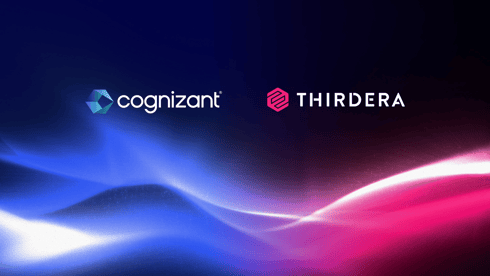Surviving Windows 10 End of Support with...
The clock is ticking for organizations still running Windows 10. Microsoft has announced that Windows 10 will reach its end of support on October 14, 2025, meaning no more...
Read MoreThirdera generates transformation, digitization, and automation for our customers at the speed of NOW.
We help organizations adopt better patterns of work and get more from ServiceNow. Our team unlocks enterprise potential to elevate experiences across the world of work.
We help organizations adopt better patterns of work and get more from ServiceNow. Our team unlocks enterprise potential to elevate experiences across the world of work.

Exciting news! Thirdera and Cognizant Awarded Three ServiceNow Partner Specializations
Read more.jpg?width=500&height=276&name=filter%20group%20of%20people%20at%20desk%20laptop%20laughing%202021-10%20(1).jpg)


Insurance Provider Projects $75MM Gain in Business Value from Asset Management Transformation
Read more-1.jpeg?width=500&height=276&name=Indiana%20Department%20of%20Transportation%20Case%20Study%202023-03%20(3)-1.jpeg)
Government Agency INDOT Modernizes Its Constituent Service Model with CitizenKey
Read more.jpg?width=500&height=276&name=Multichannel%20pipette%20tips%20reaction%20mixture%20plastic%20wells%202022-05%20(1).jpg)

Balancing mission-driven goals with operational efficiency requires innovative solutions that can streamline processes, and enhance program delivery without straining budgets.

UN Agencies Rely on Thirdera and ServiceNow to Support the Ukrainian Aid Response
Read moreDigitize and automate workflows to enhance the customer experience, online and in-store.

.jpg?width=500&height=276&name=Servers%20data%20center%20room%20with%20bright%20speed%20light%202022-05%20(3).jpg)
Global SAP on Cloud Leader, Lemongrass, Embarks on Multi-Continent ITSM Overhaul
Read more

Stay up to date with the insights from ServiceNow experts and explore our blogs, news, case studies culture posts, partner updates and more.
Stay up to date with the insights from ServiceNow experts and explore our blogs, news, case studies culture posts, partner updates and more.


Cybersecurity remains a critical concern for organizations across all sectors. With the evolving threat landscape and increasing complexity of IT infrastructures, managing vulnerabilities effectively is paramount.
In this blog, I share some of the more pertinent principles to consider when roadmapping your attack surface management program. Additionally, I highlight how ServiceNow is streamlining the remediation process, ensuring proactive defense against potential threats.
Cyber vulnerabilities come in various forms, from software flaws and misconfigurations to outdated systems and unauthorized access points. Each presents a unique risk to the organization's security posture, demanding a systematic approach to identification, assessment, and mitigation.
Most organizations have a robust infrastructure that they need to ensure remains secure including private and public cloud, containers, home-grown applications, and for some organizations operational technology devices. Given these are generally managed by multiple vulnerability and secure configuration scanning tools, the thought of connecting them all to ServiceNow and managing work in a single source can be daunting.
While some customers approach security hardening with an ‘implement everything at once’ approach, many will handle this in a phased approach, targeting either one or two data sources or data types at a time. For example, if Infrastructure vulnerabilities are handled by a combination of Wiz and Qualys, and client device vulnerabilities are handled by CrowdStrike Falcon Endpoint Protection, an implementation could start off just managing vulnerabilities from Wiz and Qualys in ServiceNow.
This approach allows for teams to get an understanding of how vulnerabilities are managed in ServiceNow before expanding into other data sources (i.e. Crowdstrike) or data types such as container vulnerabilities or secure configurations.
Once the scope has been identified, ServiceNow can get configured to ingest vulnerabilities from your initial scope of scanners. Vulnerabilities are then enriched with supporting integrations such as the National Vulnerability Database (NVD) and CISA Known Exploited Vulnerabilities (KEV) integrations. With the enrichment data and information from your CMDB, vulnerabilities get prioritized, assigned, and grouped into actionable tasks.
Armed with prioritized vulnerabilities, organizations can then develop targeted remediation plans. ServiceNow Vulnerability Response (VR) allows for easy integration into Change Request to schedule and get approval to implement changes to resolve vulnerabilities.
Additionally, for vulnerabilities that cannot be immediately resolved, ServiceNow can manage approvals for Exception requests within VR or using an integration with Integrated Risk Management to manage exceptions.
With remediation plans in place, teams execute necessary patches, updates, or configuration changes. An advanced feature, Vulnerability Patch Orchestration, enables integrations to patching tools like BigFix and Microsoft SCCM to schedule deployment of patches.
Real-time dashboards and reports provide visibility into ongoing efforts, facilitating timely validation of fixes and ensuring compliance with security policies, and closed-loop validation with the scanners ensures resolved vulnerabilities are closed or re-opened based on results of re-scans.
Effective cybersecurity remediation demands a structured, phased approach leveraging advanced tools like ServiceNow VR and Configuration Compliance. By integrating vulnerability management and compliance monitoring into unified workflows, organizations can enhance their resilience against cyber threats while maintaining operational efficiency. Embracing these technologies not only safeguards sensitive data but also fosters a proactive cybersecurity posture in an increasingly digital world.
Explore our newest Built With ServiceNow offering, Cybersecurity Hardening, to learn how you can leverage the power of ServiceNow's Security Operations suite of tools more quickly and completely.
The clock is ticking for organizations still running Windows 10. Microsoft has announced that Windows 10 will reach its end of support on October 14, 2025, meaning no more...
Read MoreAs organizations continue to embrace remote work, managing hardware assets efficiently has become more important than ever. Traditional IT asset management (ITAM) practices often...
Read MoreCognizant and Thirdera are proud to announce our selection as the winner of five ServiceNow Partner of the Year awards, including three at the Worldwide level. This recognition...
Read MoreOne of the most exciting advancements with AI is the shift toward Agentic AI—AI that not only responds to user inputs but takes proactive actions to achieve a goal. Unlike...
Read More